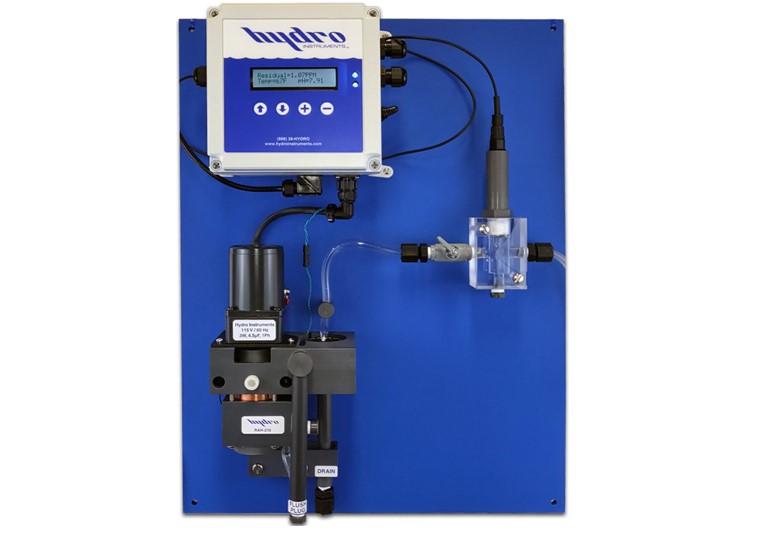The open flow cell Series RAH-210 is used for determining: Free Chlorine, Total Chlorine, Chlorine Dioxide, Bromine or Iodine in direct contact with sample water. The open flow cell style is the preferred chlorine monitor for wastewater applications due to its more forgiving mechanical design. The measurement cell consists of large copper and gold electrodes in direct contact with the sample water. This reagent-free analyzer for drinking water is continuous and does not rely on older colormetric “sample and hold” methods, similar to the Colormetric HACH Cl17, therefore, it provides a much improved process control. For Total Chlorine monitoring, food grade vinegar or acetic acid is used in combination with Potassium Iodide (KI), crystals as the buffer reagent.
Basic Specifications
- Sample Water Flow: 8 gal/hr
- Sample Pressure: 5 psig
- Range: 0 to 0.1 to 0 to 20mg/l (PPM)
- Accuracy: 0.003mg/l or +/- 1% of range, whichever is larger
- Sensitivity: 0.001 mg/l (1 ppb)
Main Features
- Measures Free or Total Chlorine
- pH and Temperature Compensation
- Optional pH probe compensation available
- Continuous Chlorine measurement meter
- Standard PID controller set point residual
- Continuous sensor cleaning mechanism
- Adjustable measurement range
- Two 4-20mA outputs and one alarm relay
- Alarm contact relay for signal loss
- Optional data logger


